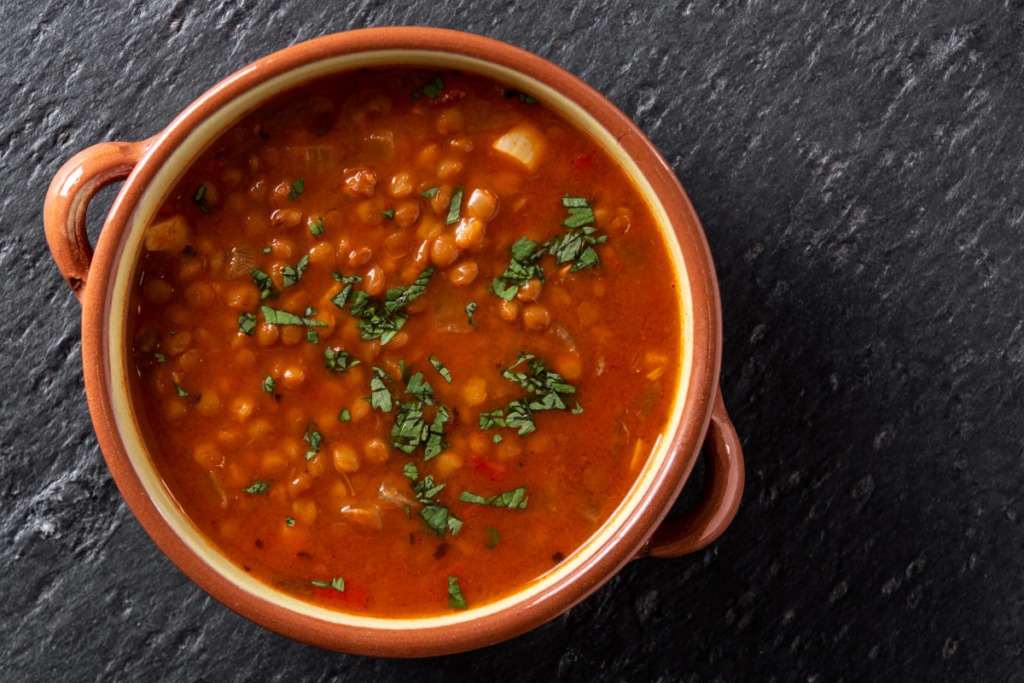
Dry beans are a nutrient-dense, affordable pantry staple that simultaneously promotes human and environmental health. Often, there are more types of dry beans available than there are canned options.
Purchasing Dry Beans
- Dry beans can be found in bulk bins and pre-bagged. The larger the size of the bag, generally the less expensive per pound.
- Look for beans in good condition, with their seed coats (skins) intact and minimal numbers of split beans. Some beans, like pintos, will turn darker as they age, so a brighter color bean may mean a fresher bean.
- Choose beans with a later best-by date. Or, if the information is available, look for beans from a more recent harvest year. In Colorado, beans are harvested in the fall.
Storage
- To preserve shelf-life, store beans in a cool, dark, dry place.
- Seal storage containers well to keep out any potential pests and to help prevent the beans from drying out. Maintaining the moisture level of the beans will help them cook faster and more evenly.
Sort & Rinse
Beans are a raw agricultural product. Before cooking, sort beans to remove any small stones, natural debris (like straw), and damaged beans. Then rinse to remove any dust.
Soaking
Soaking is optional, but it can help shorten cooking time and improve appearance by preventing beans from bursting when cooking. Also, discarding the soaking water may help reduce flatulence by decreasing the amount of an indigestible compound, galactooligosaccharides. There are two main soaking methods:
- Overnight soak: Cover beans by several inches of water (~8 cups per 2 cups beans) and soak for several hours or overnight. If soaking for more than 12 hours, refrigeration is recommended.
- Quick soak: in a large pan, cover beans with water (~8 cups per 2 cups beans) and bring to a boil. Hold at boil for 3 minutes. Turn off heat and leave to soak for 1 hour.
After soaking is complete, drain and rinse the beans before cooking in fresh water. Adding salt to the soaking water can shorten cooking time and helps to prevent beans from splitting during cooking.
Note: Lentils do not need to be soaked before cooking.
Cooking
When choosing a cooking method, consider the length of time required, the impact of elevation, and the amount of hands-on attention needed.
Stovetop Cooking Method
- Drain and rinse the soaked beans. In a large saucepan, add fresh water to cover beans by a couple inches. Add salt and seasonings if desired. Bring the beans to a boil, then reduce heat to a simmer.
- Simmer until beans are tender. Add water as needed to ensure beans remain covered.
- Cooking time varies but is generally about 1-3 hours, although lentils usually take less than 1 hour. Check for doneness by mashing beans with a fork (they are done when easily pierced) and/or sampling.
Consider:
- Stovetop allows the flexibility to add ingredients and taste as you go, but it also requires more attention to ensure the pot does not boil dry.
- Cooking time increases with elevation. Try other methods if stovetop cooking is taking too long, for example at elevations above 7,000 feet.
Slow Cooker Method
- Drain and rinse the soaked beans. In the slow cooker, add beans and enough water to cover them by at least an inch. Add salt and seasonings if desired.
- Cook on low for 6-8 hours or on high for 4-5 hours. Test for doneness and cook longer if necessary.
Consider:
- This method takes longer but is very hands-off.
- Unlike with a pressure cooker, you can still see what is happening inside a slow cooker.
- Note: Beans contain a compound called lectins that can cause intestinal discomfort. When beans are cooked, lectin activity is eliminated. However, red kidney beans are particularly high in lectins, thus it is not recommended to cook red kidney beans in a slow cooker because lectins may still be present. If you want to prepare red kidney beans in a slow cooker, the recommendation is to first boil them for 10 minutes before finishing them in the slow cooker, to properly inactivate lectins.
Electric Pressure Cooker Method
- Drain and rinse soaked beans. Add to cooker’s inner pot with fresh water (follow cooking instructions for amount of water based on whether you soaked beans or not) and salt and seasonings if desired. Adding a small amount of cooking oil (~1 Tbs per 1 lb dry beans) is optional and can help reduce foaming.
- Cook according to pressure cooker manual, depending on bean variety. Remember to increase time for elevation. Generally, the recommendation is to increase cooking time by 5% for every 1,000 feet above 2,000 feet elevation in an Instant Pot. For example, if you live at 5,000 feet, increase cooking time by 15%.
- Allow at least 5 minutes of natural pressure release before using quick release.
Consider:
- This method can help speed up cooking time and is relatively hands-off. However, remember that it does take time for the cooker to get up to pressure, before the programmed cooking time begins.
- Beans cooked in a pressure cooker will foam. To prevent vent blockage and cooker malfunction, do not fill the cooker over the maximum ½-full mark. Doing so could block the vents and cause the unit to malfunction.
- Note: For more information see: https://foodsmartcolorado.colostate.edu/cooking-beans-at-high-elevation-using-an-electric-pressure-cooker
Storing Cooked Beans
Serve or refrigerate cooked beans within 2 hours. Store in sealed containers, in the refrigerator (35°F-40°F) for 3-5 days. Alternatively, store cooked beans in sealed containers or bags in the freezer (0°F or below) for 6-8 months.


